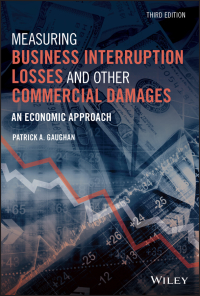Question
Medtech Inc. is a Canadian controlled private corporate. It uses a taxation year which ends on December 31. At the end of the 2018 taxation
Medtech Inc. is a Canadian controlled private corporate. It uses a taxation year which ends on December 31. At the end of the 2018 taxation year, the Company had a balance in its Refundable Dividend Tax On Hand of $26,330. The dividend refund for 2018 was $8,885.
On December 31, 2018, Medtech had no balance in its GRIP.
During the taxation year ending December 31, 2019, Medtech had Taxable Income of $456,250. The Part I Tax Payable for the year was correctly calculated to be $82,506. Net Income For Tax Purposes does not include any foreign source income. No net capital losses were deducted in determining Taxable Income.
The Companys Net Income For Tax Purposes includes the following amounts of non-operating income:
Capital Gains $87,460
Eligible Dividends From Canadian Public Companies 26,560
Net Rental Income From Residential Properties 14,760
Dividends From Connected Company (See Note) 77,700
Note These dividends, none of which were designated as eligible, were received from Medcare, another CCPC. Medtech owns 42 percent of this companys voting shares. As a consequence of paying this dividend, Medcare received a dividend refund of $20,386.
Medtech is associated with four other companies. The annual business limit for the small business deduction is shared equally by Medtech and these companies. The $100,000 allocation is significantly less than the Companys active business income for 2019.
Medtech Inc. paid taxable dividends of $66,560 during the year. It is the policy of the corporation to designate dividends as eligible only to the extent that a dividend refund will be available on their payment.
For 2018, Medtech and its associated companies had combined ADJUSTED Aggregate Investment Income of $32,400. Their Taxable Capital Employed In Canada totalled $2,300,000 for 2018.
Required:
A. Determine the transitional balances for Medtechs Eligible RDTOH and its Non-Eligible RDTOH.
B. Determine the refundable portion of Medtechs Part I Tax Payable for 2019.
C. Determine Medtechs Part IV Tax Payable for 2019.
D. Determine the December 31, 2019 balances in Medtechs Eligible RDTOH and its Non-Eligible RDTOH.
E. Determine Medtechs 2019 dividend refund, providing separate amounts for refunds on eligible dividends and refunds on non-eligible dividends.
Formulas for chapter 13 (Tax rates were updated for the year 2019.)
Aggregate Investment Income (AII) = Interest + Taxable Capital Gains + Rents Net Capital Losses Deducted
Additional Refundable Tax on Investment Income (ART) =10-2/3% of Lesser of:
- AII
- Adjusted Taxable Income ( Taxable Income Exceeds AESBD)
Refundable Portion of Part I Tax= The Least Of:
- Investment Income Constraint
Determined By Formula A-B, Where
-
- A =30-2/3% of AII
- B =Foreign Non-Business Income tax credit Exceeds 8% of Foreign Investment Income
- 30-2/3% of The Adjusted Taxable Income =
Taxable Income Exceeds the total of:
-
- AESBD
- 100/38-2/3 of Non-Business FTC
- 4 Times Business FTC
- Tax Payable Under Part 1-ITA 129(3)(a)(iii)
Part IV Refundable Tax
Dividend Is Received from an Unconnected Company (Portfolio Dividend)
Part IV tax = 38-1/3 * Dividends received
Dividend Is Received from a Connected Company,
Part IV tax= Refund received by Paying corp.* % of holding in receiving corporation
Eligible RDTOH
- Components
- Opening Balance
- Transitional balance for 2019
- After 2019 - December 31 balance for previous year
- Additions
- Part IV taxes on portfolio dividends
- Part IV taxes on eligible dividends received from connected companies in those situation where the connected company received a refund from the companys Eligible RDTOH
- Deduction Any dividend refund claimed from the Eligible RDTOH in the previous year
- Opening Balance
Non-Eligible RDTOH
- Components
- Opening Balance
- Transitional balance for 2019
- After 2019 - December 31 balance for previous year
- Additions
- Part I refundable tax for the year
- Part IV taxes on eligible dividends received from connected companies in those situation where the connected company received a refund from the companys Non-Eligible RDTOH
- Deduction Any dividend refund claimed from the Non-Eligible RDTOH in the previous year
- Opening Balance
Dividend Refund -Eligible Dividends
- = The Lesser Of:
- 38-1/3% Of Eligible Dividends Paid During The Year
- Balance In Eligible RDTOH Account At The Year End
Dividend Refund-Non-Eligible Dividends
- Component 1 - The Lesser Of:
- 38-1/3% Of Non-Eligible Dividends Paid During The Year
- Balance In Non-Eligible RDTOH Account At The Year End
- Component 2 If there is an excess of 38-1/3 percent of non-eligible dividends paid over the balance in the Non-Eligible RDTOH, this component is the lesser of:
- The amount of the excess
- Any balance that remains in the Eligible RDTOH after the refund on eligible dividends.
Capital Gain Inclusion rate: 1990-2000 , 2000 (Part) 2/3, 2000 to present
|
| Non-Eligible | Eligible |
| Gross up | 15% | 38% |
| Dividend credit-Federal | 9/13 of gross up | 6/11 of gross up |
Step by Step Solution
There are 3 Steps involved in it
Step: 1

Get Instant Access to Expert-Tailored Solutions
See step-by-step solutions with expert insights and AI powered tools for academic success
Step: 2

Step: 3

Ace Your Homework with AI
Get the answers you need in no time with our AI-driven, step-by-step assistance
Get Started


